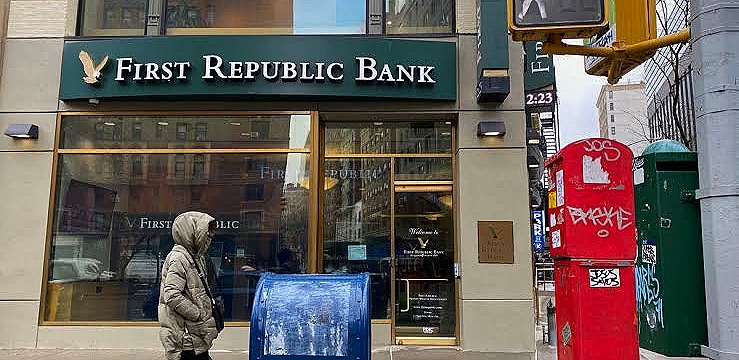By John Ikani
On Tuesday, shares of US regional banks experienced significant losses on Wall Street, despite hopes that the resolution of First Republic’s problems would bring an end to the crisis.
Large banks like Citigroup and Bank of America also saw declines, but regional banks were hit the hardest.
The most notable losses were at PacWest Bancorp (-24 percent) based in Los Angeles, Western Alliance Bancorporation (-16 percent) in Phoenix, Zions Bancorporation (-11 percent) in Utah, and KeyCorp (-9 percent) based in Cleveland.
The poor performance of bank stocks is a source of concern, and there are worries that the situation may not improve after First Republic.
The global markets had a turbulent day, with oil prices falling due to concerns about a US debt default resulting from a standoff between Democratic President Joe Biden and the Republican-led House of Representatives.
JPMorgan Chase’s acquisition of most of First Republic on Monday, engineered by the Federal Deposit Insurance Corporation, provided some relief.
However, leading regional banks experienced losses on Monday, which was a precursor to Tuesday’s more substantial losses.
The Fed’s pivot to suddenly higher interest rates from a lengthy period of low or near-zero rates has caused banks to increase the interest they pay customers to prevent a loss of deposits.
This dynamic means banks must compete with each other for deposits, cutting into profits. According to Goldman Sachs analyst Ryan Nash, there will be “continued pressure” on bank deposits in the wake of the shift in Fed policy.
The First Republic crisis’s resolution also highlighted the disadvantage of smaller banks compared to a giant like JPMorgan, the nation’s largest bank by assets.
Three other midsized banks participated in the FDIC bidding process, but the agency picked JPMorgan because it offered more money and could more easily integrate the branches into its network.
This outcome implies that regulators will be willing to allow banks to fail and allow them to fall into the hands of larger banks, which is a negative for regional banks.




































